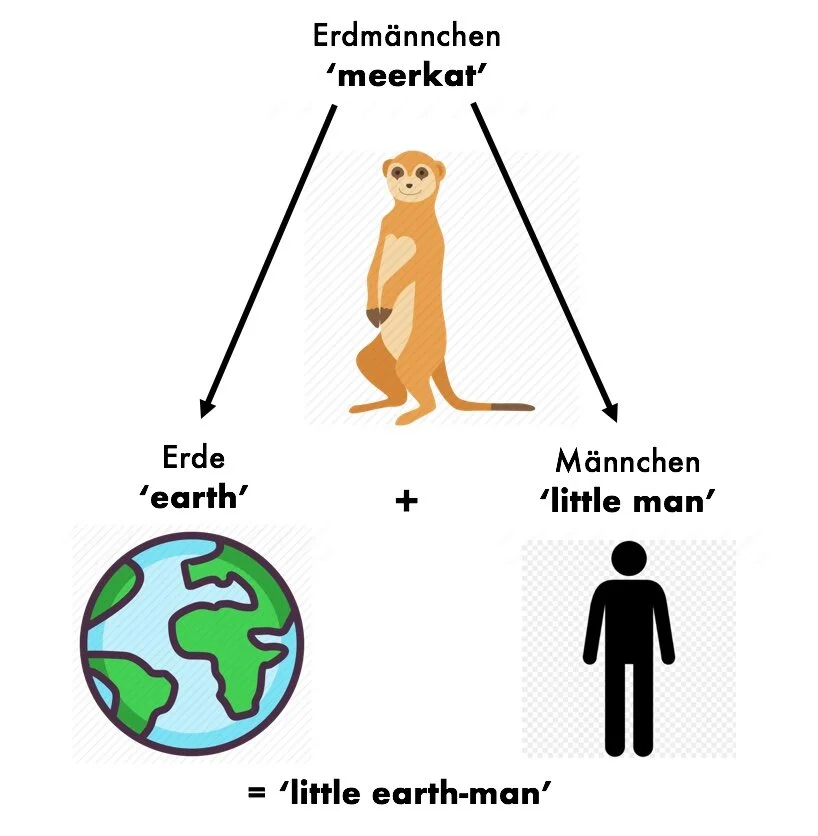9 Tips for Better Spanish Pronunciation
View of the Avenue of the Dead and the Pyramid of the Sun from the Pyramid of the Moon, in the ancient Mesoamerican city of Teotihuacan, Mexico.
In this post we will learn some tips to help us take our Spanish pronunciation to the next level.
Now, I am very far from fluent in Spanish, but many Spanish speakers have told me that my pronunciation of their language is very good. I am able to pronounce it more accurately by following a number of helpful Spanish pronunciation tips, which I will enumerate here for you.
Hopefully any Spanish learner will be able to read this and get something out of it.
Note: this list of pronunciation tips is particularly helpful for Mexican Spanish. I know they say some things differently in Spain and in other Latin American countries.
Remember the obvious ones.
These are things I knew before I learned any Spanish just from being an English speaker in Texas, because there are a lot of Spanish speakers nearby. “The obvious ones” may not be a great name, as they are not obvious if you don’t know them. Note that <angled brackets> enclose the spellings and [square brackets] enclose phonetic transcriptions in IPA.
They are:
<ñ> [ɲ] as in jalapeño
<ll> is a [j] sound as in tortilla, quesadilla (with [j] as in “hallelujah” rather than in “judge”);
<qu> is always [k] like in quiero ‘I like’ and taquito (never [kw] as in “quit”); and
<j> is (roughly) [h] like in julio, ‘july’.
Listen to the pronunciation of these words.
There are very few silent letters (<u> when it comes after a <q>, and <h>) and no silent <e> as in many English words. For example “guacamole” doesn’t rhyme with “whack-a-mole”.
2. Don’t diphthongize your vowels.
American speakers of English produce what are called “diphthongs” for their vowel sounds, especially the vowels of “say” and “low”. I like to describe diphthongs as “two vowels for the price of one”, basically they are two vowels which are squished together to form a single syllable. There is a little offglide when you say these English sounds, for example a [j] sound on the end of “say” and a [w] sound on the end of “low”. So what you need to do instead for better Spanish pronunciation is to make these a single pure vowel sound, [e] and [o], rather than making them two vowels sounds, [ej] and [ow]. For example, the Spanish words: sé ‘I know’, lo ‘it, the’.
Listen to the difference between the English and Spanish vowel sounds in these words.
To better approximate the Spanish pronunciation, try singing these syllables. Sing “say” and hold it out long. Either you are holding out the final [j] part or you are holding out the initial [e] part of the vowel sound. Try to hold the [e] part and then stop vocalizing before you get to the [j] sound. Now you have isolated the pure vowel [e]. Sing “low” and hold it out long. Either you are holding out the final [w] part or you are holding out the initial [o] part of the vowel. Try to hold the [o] part and then stop vocalizing before you get to the [w] sound. Now you have isolated the pure vowel [o].
Using this tip, you can say the Spanish word for ‘time’, tiempo [tjem.po] (the dot marks the syllable boundary), and sound a lot more native.
3. Don’t aspirate your voiceless stops.
If you hold a sheet of paper loosely right in front of your mouth and say the English word “pin”, you should see the paper move. Now if you say the word “spin”, the paper should not move in this way. This is because the first sound in “pin” has an extra puff of air called aspiration. When you say “spin,” no such aspiration occurs. (For a detailed explanation of aspiration, see our previous post on aspirated Korean consonants.) The Spanish [p] should always be unaspirated like the [p] in English “spin”. This is true of the Spanish [t] and [k] as well. These consonants may sound to an English speaker like the voiced consonants [b, d, g], but this is because we associate voicelessness with aspiration.
Listen to the pronunciation of the Spanish word poquito ‘little bit’.
4. Distinguish the two kinds of r sounds: single <r> and double <rr>.
The Spanish single <r> sound we actually have in English, too, but not as a variant of our /r/. The <tt> in “butter” [bʌɾə˞ ] and the <dd> in “redder” [ɹɛɾə˞ ], as produced by North American English speakers, are examples of this. (Most speakers of UK and other varieties of English preserve the stop consonants [t] and [d] in such words.) The IPA symbol for Spanish single <r> is [ɾ], and it’s called an alveolar tap. Just touch your tongue to the alveolar ridge really quickly.
Listen to the pronunciation of the single <r> sound in pero ‘but’.
Now the <rr> is much more tricky. It took me over a decade (ages 11 to 23) to be able to produce this sound, and even so, I still can only do it sometimes. It has the phonetic symbol [r]. All I can recommend on this sound is to watch this video and practice, practice, practice.
This video honestly helps with both single and double <r>, and especially since I needed help with the <rr>, the video was helpful to me. I like her method of saying two single <r> sounds back to back, because it is true, after some time, your tongue gets a little tired and will roll.
Listen to the (exaggerated here, for the learner) pronunciation of the double <rr> sound in perro ‘dog’.
5. Notice that voiced stops become fricatives after a vowel.
We have this cool linguisticky word, “postvocalic(ally)”, which means ‘after a vowel’. This describes what happens in Spanish, but there are two other voiced sounds besides vowels, such as [l] and [r]. So in a word like hablo ‘I speak’, the /b/ occurs between two voiced sounds because it has an /a/ on one side and an /l/ on the other. So the /b/ sound is ripe for this rule.
The voiced stops are the following set of sounds [b, d, g]. When they occur in the aforementioned environment (in postvocalic position), they become fricatives in Spanish. Those are, respectively, [β, ð, ɣ].(Note that we have only one of these sounds in English: [ð] as in “either”.)
As a result, Spanish hablo ‘I speak’ can be pronounced [aβlo] and milagro ‘miracle’ is pronounced [milaɣɾo]. Listen to these words here.
Note: there is variation here and the letter <b> is not always affected by this and may surface as [b] as in hablo [ablo], depending on the speaker and or utterance.
When these consonants occur word-initially or in any other phonetic environment, they do not sound like fricatives but instead remain stops [b, d, g]. For example, as in the words: bien ‘good’, donde ‘where’, and gato ‘cat’.
6. Keep in mind that Spanish doesn’t actually have /z/ sound -- there is a <z> letter but it makes an [s] sound. This one is pretty straightforward. If you have a word like corazón ‘heart’, you say [koɾason], you don’t voice the <z> as in Eng. “zone”. Listen to the pronunciation of this word.
However, in Spain, the pronunciation is different. The <z> is pronounced as /θ/ there (the “th” sound in English), and so ‘heart’ is pronounced [koɾaθon]. Zapatos, ‘shoes’ is pronounced [sa.pa.tos] in Latin American Spanish, but in Spain the same word is pronounced as [θa.pa.tos]. It is the same with <c> as well, namely that it will be [s] in Latin America and [θ] in Spain. For example, impaciencia ‘impatience’ [im.pa.θjɛn.θja] in Spain and [im.pa.sjɛn.sja] in Latin America.
7. Bear in mind this subtle point: dental /t/ and /d/ sounds.
So if you say a word in English that has a /t/ or a /d/ sound in it, you will notice that your tongue hits the roof of your mouth right about at the corner behind your teeth. We call this the alveolar ridge, so these sounds are alveolar.
To produce the Spanish /t/ and /d/ they should actually be where you produce a “th” sound [θ] or [ð] in English, so you should move your tongue a teensy bit forward when producing these sounds in Spanish.
Listen to the pronunciation of the /t/ and /d/ in the Spanish word dientes ‘teeth’.
8. Consider that the <j> is pronounced like [x ~ h].
There is variation among speakers. Sometimes it is [h], sometimes it is more like the velar fricative [x] (as in the words “loch”, “Bach”). Consider the pronunciation of <j> in junio ‘June’.
9. Learn the whole <b/v> thing.
Letters <b> and <v> are regarded as the same sound in Spanish, so if you see a <v> just produce it according to the rules you already learned for <b>, namely fricativized between two non-nasal voiced sounds. Listen to the pronunciation of the letters <b> and <v> in these words:
bello/vello
botar/votar
bate/vate
baca/vaca
You still have to remember which words are spelled with which letter though, because written Spanish still uses both letters even though they sound the same. This should be easier for Englishers because of numerous cognates.
Conclusion
Thank you for reading this today, and may it help with your pronunciation of the Spanish language. I hope you will stay tuned for more Spanish pronunciation tips and tricks, and for our posts about other aspects of learning Spanish and other languages, too!































Tools for helping you master some of the trickier points of German grammar, whether you’re learning it for the first time or wanting to review the fundamentals. Los geht’s!